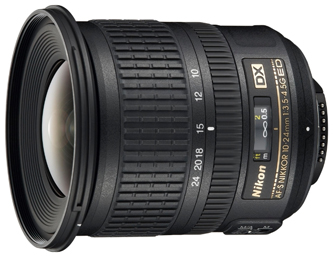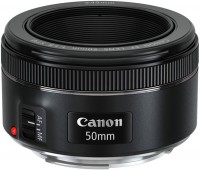Вибираємо ширококутний об'єктив для дзеркальних камер
Ми незалежно перевіряємо товари та технології, які рекомендуємо.

Це не традиційний для нас ТОП-5, тому що ми рассмотриваем три моделі від альтернативних виробників і чотири фірмових продукту. Власні версії надширококутних зумів є у всіх виробників дзеркальних апаратів. Відповідно, покупець вільний вибирати, особливо якщо у нього камера Canon або Nikon. Здебільшого альтернативні моделі коштують дещо дешевше «фірмових», але практично не поступаються їм за якістю картинки і експлуатаційним характеристикам. За рідкісним винятком об'єктиви від виробника коштують дорожче аналогічних «альтернативних», тому в аматорському середовищі використовуються рідше. Тим не менш, саме вони гарантують максимальну сумісність з електронікою камери і краще юстіруются у фірмових сервісних центрах.
Технічні характеристики моделей у нашій добірці, зробленої за формулою 3+4, можна порівняти в таблиці. З повним каталогом об'єктивів ви можете ознайомитися за посиланням і, завдяки фільтрам, самостійно знайти потрібну модель.

Зручний у використанні, добре зібраний, металевий роз'єм байонета, порівняно доступна ціна.
Невисока різкість в кутах кадру при будь-яких діафрагмах, немає оптичного стабілізатора.
|
Tamron 10-24mm f/3.5-4.5 IF Di II LD Aspherical Інженери Tamron врахували зауваження до першої версії цього об'єктива і переробили не тільки оптичну схему, але і систему автофокусування. Результат вийшов цікавим. Адже за досить доступну ціну новачки можуть придбати хороший об'єктив і зрозуміти, чи потрібен їм такий діапазон фокусних відстаней. Зверніть увагу, цей об'єктив — незалежно від байонета — розроблявся для роботи з «кроп»-камерами, тобто оснащеними матрицями APS-C і менше. Тести та відгуки користувачів свідчать, що робітники діафрагми незалежно від положення трансфокатора лежать в діапазоні f/5,6-8. Через дуже великого кута зору відсутність оптичного трансфокатора не здається великим недоліком — шевеленка з'являється лише після 1/30 сек. Картинка, досить різка по центру кадру, з наближенням до його країв помітно пом'якшується. Геометричні спотворення можна помітити, однак вони не псують враження. Бочкоподібна дисторсія теж є, але вона невелика і автоматично виправляється профілем для Adobe Camera RAW. Хроматичні аберації присутні, втім, вони легко видаляються на етапі пост-обробки. Зображення нормальний контраст, а помітні спотворення передачі кольору відсутні. Боке досить приємне, хоча широкий кут зору не дозволяє розмити об'єкти в зоні нерізкості до невпізнання. У Tamron 10-24 великі лінзи, а сам об'єктив не назвеш компактним. Тим не менш, він не «тягне» камеру вниз, а середня маса дозволяє досить комфортно знімати з рук. Кільця трансфокатора і наведення на різкість широкі. Вони покриті гумовими накладками з великої фактурою, що робить тонку настройку зручною. Обертання кілець плавне, без помітних люфтів. Слід зазначити довгий хід колеса ручного наведення на різкість. Це потрібно насамперед відеооператорів, тому що дозволяє плавно змінювати зону фокусування. У комплекті поставки йде хороша пелюсткова бленда. Врахуйте, що для автоматичного наведення на різкість використовується мікромотор. Перед покупкою версії для камер Nikon переконайтеся в сумісності, оскільки не всі апарати оснащені вбудованим мотором приводу автофокусу. Перемикач режимів фокусування ручна/автоматична не передбачає можливості ручного підстроювання — в автоматичному режимі колесо механічно блокується. Ще одна деталь — в процесі фокусування і трансфокації передня лінза не обертається. Tamron 10-24mm F/3.5-4.5 Di II можна порекомендувати бажаючим спробувати зйомку на широкому вугіллі. При невеликих витратах цей об'єктив дає хороші результати, особливо якщо користуватися постобробки. |

Ергономічна конструкція, ультразвуковий мотор автофокусування, коштує недорого.
Маленька діафрагма на 20 мм, немає оптичного стабілізатора.
|
Sigma 10-20mm f/4.0-5.6 AF HSM EX DC Sigma випускає версії цього об'єктива для всіх поширених байонетов з матрицями APS-C і менших розмірів. Цей об'єктив вийшов на ринок давно і заслужено отримав безліч схвальних відгуків від задоволених покупців. Вони відзначають високу якість виготовлення, приємні на дотик оздоблювальні матеріали і, безумовно, хороші результати зйомки. А ще в його конструкції використовується чимало металу, тому він, до речі, — важкий (470 г). Робочі діафрагми починаються з f/8, а великі дають помітно м'яку картинку. Зображення виходить з правильною передачею кольору і нормальної контрастністю (якщо не направляти передню лінзу прямо на джерело яскравого світла). Геометричні спотворення є, і вони помітні по краях кадру, однак можуть бути виправлені завдяки наявності профілю для Photoshop і Lightroom. Головне — не переплутати його, адже в лінійці Sigma є модель з такими ж фокусними відстанями, але з діафрагмою f/3,5. А по центру кадру з геометрією немає проблем на всіх фокусних відстанях. Коли зображення кадрируется в графічному редакторі, необхідно приділити увагу компенсації віньєтування, воно помітно в телеположенні, якщо так можна назвати еквівалент фокусної відстані 30 мм. Під час зйомки відео віньєтування не критично і не дуже помітно. Боке з урахуванням кута зору і маленькою діафрагми виходить не часто, і це добре, оскільки в зоні нерізкості контрастні краю об'єктив створюють брижі. Колеса трансфокатора і ручного наведення на різкість не дуже широкі, однак це дало змогу розподілити їх на достатню відстань, щоб власники великих пальців не відчували дискомфорт. Обертання цих елементів м'яке, люфтів немає. Трансфокатор дворазовий, але хід кільця зміни фокусної відстані відчутно довгий. Це важливо для надширококутний об'єктива, де відносно малий хід виявляється більшим у перерахунку на градуси кута зору. Ультразвуковий мотор переміщає блоки лінз швидко і тихо, незважаючи на те, що мінімальна дистанція фокусування в Sigma AF 10-20 всього 24 см, а максимальна – нескінченність. Об'єктив оснащений перемикачем режимів наведення на різкість ручний/автоматичний, але фотограф незалежно від його установок в будь-який момент може внести корективи. Sigma AF 10-20mm F4.0-5.6 EX DC HSM — відмінний вибір для тих, хто оцінює майбутні покупки по співвідношенню ціни і якості. Це хороший об'єктив за свою ціну, а щоб отримати кращу якість, потрібно істотно збільшити бюджет. |

Картинка в стилі «риб'яче око», кут зору на 10 мм – 180° по діагоналі, легкий і компактний.
Дає характерні для «риб'ячого ока» спотворення, використання фільтрів не передбачено.
Ціна від 28 227 грн.
|
Формально цей об'єктив істотно відрізняється від інших учасників нашого огляду, тому що це «риб'яче око» з усіма витікаючими наслідками у вигляді характерних спотворень і особливостей використання. Однак є два вагомих аргументів, завдяки яким він присутній в рейтингу. По-перше, багатьом любителям бюджет не дозволяє придбати класичний «риб'яче око» і надширококутний зум-об'єктив. Tokina AF 10-17 почасти замінює обидва. По-друге, спотворення, особливо в телеположенні, непогано виправляються автоматично профілем Adobe Camera RAW або вручну — фільтром Adaptive Wide Angle в Photoshop. Tokina AF 10-17 випускається у версії для APS-C-апаратів Canon і Nikon. Причому для останніх без вбудованого мотора. Відповідно, для роботи автофокусу потрібна наявність двигуна в камері, а, як відомо, не всі моделі Nikon їм оснащуються. При зйомках на Canon максимальний кут зору по діагоналі складає 168° — через кроп-фактора 1,6. Знявши верхню, об'єктив можна встановити і на повнокадрові камери, однак на фокусних відстанях 10-14 мм віньєтування буде дуже сильне, а зображення придбає характер, властивий циркулярним «риб'ячим очам». Власники кажуть, що різкість починається з діафрагми f/4,5. Для вірності можна ставити f/5,6-8, тоді навіть в кутах кадру вийде хороший результат. В картинці крім вже згадуваних характерних спотворень (для моделей типу fish-eye) є хроматичні аберації. Тому зйомка в RAW і обробка на комп'ютері настійно рекомендуються. До конструкції претензій немає: об'єктив добре виготовлений, оздоблювальні матеріали приємні на дотик, роз'єм байонета металевий. Кільця трансфокації і наведення на різкість рознесені і мають відчутне пальцями рифлення. Наводка на різкість супроводжується звуками, але вона відбувається швидко. Механізм дозволяє фотографу вносити поправки без додаткових перемикань. Оскільки використання фільтрів конструкцією не передбачено, передня лінза захищена водовідштовхувальним покриттям WR (Water Repellent). Тим не менш, під час роботи слід дотримуватись обережності, оскільки мінімальна дистанція фокусування всього 14 мм і лінзу можна випадково вдарити про об'єкт зйомки. Якщо вам потрібен об'єктив для експериментів з перспективою, для нестандартних портретів і для пейзажної зйомки, включіть в список кандидатів на покупку Tokina AF 10-17mm f/3.5-4.5. Ще додамо, що і під час зйомки відео в ширококутному положенні з Tokina виходить цікава картинка. |

Приваблива ціна, є оптичний стабілізатор, STM-мотор для тихої і плавною фокусування.
Пластиковий роз'єм байонета, електрифіковане кільце наведення на різкість не працює при вимкненій камері.
Ціна від 8 995 до 20 027 грн.
|
Canon 10-18mm f/4.5-5.6 EF-S IS STM Ціна від 8 995 до 20 027 грн. → Цікавий об'єктив від Canon, що привертає увагу любителів відмінним співвідношенням ціни і якості. Тести показують, що в діапазоні f|/5,6-11 він дає різку картинку з незначними спотвореннями, причому в кутах її погіршення не критичні. Якість виготовлення несподівано висока для цієї цінової категорії. Так, кільця обертаються плавно, кута повороту вистачає для точного вибору фокусної відстані. Кільце наведення на різкість електрифіковано і не пов'язане механічно з блоками лінз. Тому від використання Canon EF-S 10-18mm f/4.5-5.6 IS STM залишаються приємні враження. |

Відносно недорогий «риб'яче око» для системи Pentax, досить різкий і якісно виготовлений.
Помітні хроматичні аберації, боке краще не показувати.
Ціна від 28 402 до 31 156 грн.
|
Pentax 10-17mm f/3.5-4.5 IF SMC DA ED Fish-Eye Ціна від 28 402 до 31 156 грн. → Історія появи дуже схожих об'єктивів Tokina AF 10-17mm f/3.5-4.5 і Pentax SMC DA 10-17mm f/3.5-4.5 не відома. Існує думка, що Tokina робить версію дизайну Pentax для байонетов Canon і Nikon, а всі вони базуються на ще «плівковому» smc PENTAX-F FISH-EYE 17-28mm 1:3.5-4.5. Відповідно, те що було сказано про характер картинки, «підводних каменях» і способи їх подолання у Tokina справедливо і для Pentax SMC DA 10-17mm. Тести свідчать про відмінну різкості в центрі кадру і по краях, а найбільш вдалою є діафрагма f/11. Зображення у цього Pentax добре піддається корекції завдяки наявності профілю для Adobe Camera RAW і практично відсутньому віньєтування. До особливостей цієї моделі відноситься те, що всередині немає мотора для автоматичного наведення на різкість. Лінзи переміщує «викрутка», розташована в байонете камери. |

Відмінна картинка, добре виготовлений, є мотор для автофокусування, зручний в роботі.
Висока ціна навіть після її зниження.
Ціна від 31 000 до 62 800 грн.
|
Nikon 10-24mm f/3.5-4.5G AF-S ED DX Nikkor Ціна від 31 000 до 62 800 грн. → Цей об'єктив Nikon можна наводити як приклад хорошої моделі свого типу. Адже він чудово сконструйований, ретельно зібраний, забезпечує «дзвінку» різкість вже на f/5,6. А за автофокус відповідає тихий і швидкий ультразвуковий мотор. Крім того, Nikkor 10-24mm стійко тримає контрове світло і помірно виньетирует картинку. Єдине, що направляє погляди потенційних покупців на інші моделі, — цінник на Nikon 10-24mm f/3.5-4.5 G ED AF-S DX. На тлі універсальних аматорських зумів він здається невиправдано високою. Причому навіть після деякого зниження вартості, а на старті продажів Nikkor 10-24mm коштував приблизно $900. Втім, ширококутні об'єктиви, особливо такого рівня, і для інших систем коштують недешево. |

Гідна якість зображення, швидка наводка на різкість.
Висока ціна, механічний привод автофокусування з камери.
Ціна від 8 920 до 15 808 грн.
|
Sony 11-18mm f/4.5-5.6 DT Ціна від 8 920 до 15 808 грн. → Sony не поспішає відмовлятися від дзеркальних камер з байонетом А, що дістався їй у спадок від колишньої величі Minolta. А щоб встановити SAL-1118 на бездзеркальні апарати Sony з байонетом E, наприклад, популярні NEX, необхідний моторизований адаптер Sony LA-EA4, інакше автофокусування працювати не буде. Sony SAL-1118 дає відмінну різкість на діафрагмах f/8-11 і прийнятні для цього класу оптики спотворення (включаючи бочкоподібної дисторсію і хроматичні аберації). Сукупність цих якостей привертає до нього увагу покупців. Завдяки використанню полікарбонату при виготовленні корпусу, об'єктив вийшов досить легким. Хоча він порівняно великий за розмірами (діаметр фільтра 77 мм) і складається з 15 лінз (рекорд цієї збірки). |
Десять легендарних телефонів, кожен з яких залишив свій слід в історії.
Вибираємо навушники підходять для будинку, офісу і дороги, з якими ви забудете про Beats.
Короткий список найбільш важливий рад починаючому фотографу про камеру і аксесуари до неї.
Вибір конфігурації ПК, якщо бюджет дуже обмежений, — справа не проста.
Огляд комплектів, що виділяються якістю звучання, функціональністю і дизайном.
Статті, огляди, корисні поради
Усі матеріали
















